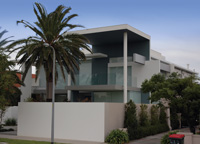A World of Architectural Styles including Edwardian, French Provincial and so many more!
God is in the Detail
The profiles on this website represent a long and rich architectural heritage. Designed by the most influential of Australian and international architects and interior designers, our mouldings reflect a comprehensive range of styles from centuries ago to the present. The architectural styles are grouped into different eras. There are many and varied influences within each historical era. Periods overlap and elements of several styles are often incorporated into different eras.
Colonial & Early Victorian
1836 to 1870
1836 to 1870
The Colonial style is notable for its symmetry. A central front entrance with windows either side and wide verandahs are typical characteristics of the Colonial period. It is not uncommon for the verandah to encircle the entire structure. Usually single story buildings, Colonial homes are simple in style and often feature subtle touches of the Georgian or Classical detailing that were popular in Britain in the mid-19th century. The Colonial style expresses a sense of dignity and spaciousness. The mouldings of the era are simple. Having few decorative elements, they typically feature straight lines with smaller detail at the top.
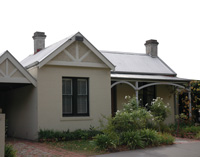
Victorian
1840s to 1901
1840s to 1901
The Victorian style is typically elaborate and richly detailed. Its main characteristics are balance, proportion and elegance. This architectural style refers to the reign of England's Queen Victoria, which began in 1839. The period is commonly divided into Early Victorian (1840 to 1865) Mid- Victorian (1865 to 1880) and Late Victorian (1880 to 1900). During the Victorian era, Georgian and Regency styles were the dominant styles for public buildings, while Gothic was the style of choice for most churches. Grand residences built in the Victorian period were designed to exude affluence and express social standing through the size and detailing of the home. They were a reflection of the progress and prosperity of England's colonies. Mouldings of the Victorian era tended to be elaborate and rich in detail. Door blocks were a common feature and many of the larger Victorian homes incorporated highly decorative 2 and 3-piece skirtings.
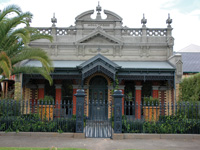
French Provincial
Mid - 1600s
Mid - 1600s
These designs have their origin in the rural manor homes built for French nobility during the reign of Louis XIV. A formal style characterised by balance and symmetry; their defining features include steep, high hip roofs, rectangular doors set in arched openings, shuttered double French windows, balconies and porch balustrades. In keeping with this very formal style, French Provincial mouldings typically feature voluptuous curved surfaces. They are sumptuous and elegant but simple.
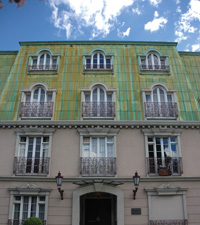
Georgian
1826 to the 1860s
1826 to the 1860s
This architectural style is named after England's four King Georges and draws heavily on classical influences. It is typified by formality, straight lines and fine detail. Georgian designs are symmetrical. Paired chimneys as well as a decorative "crowns" above the main entrance are commonly featured in buildings of this era. Georgian period mouldings are characterised by flat surfaces as well as simple, straight lines without curves.
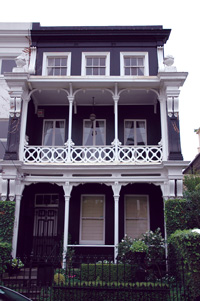
Tuscan
Pre-Roman to the present
Pre-Roman to the present
Originating with the ancient Etruscans in northern Italy, the Tuscan architectural style is simple and elegant. Natural materials including sandstone, limestone and terra cotta characterise this style and marble is often used in decorative details such as flooring, arches and pillars. The look of Tuscan homes is solid and substantial. Reminiscent of those used in the Georgian style, the mouldings typically featured in Tuscan buildings incorporate straight lines and simple shapes.

Classical
Roman to te Present
Roman to te Present
The Classical style borrows freely from the architecture of other eras. Symmetry is one of its defining features and the style is distinguished by its simple yet elegant foundations and figures. The mouldings used in Classical interiors are understated and generally have minimal details.
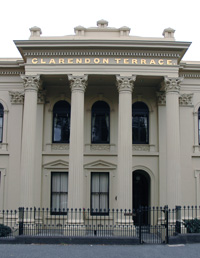
Federation
1890s to 1915
1890s to 1915
Australian Federation architecture has a wide variety of influences and a dozen distinct "sub-styles". Classical motifs were commonly featured in Federation-era public buildings and were used to express authority, wealth and a sense of culture. The Gothic style and, later, the Romanesque (then popular in the United States) were often applied to churches during this period. Queen Anne, Arts and Crafts and Bungalow designs were typically the choice of the day for homes. Influenced by the International Arts and Craft movement, the mouldings most widely used in Federation architecture are rich in detail and are generally highly ornamental.
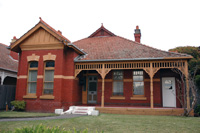
Edwardian
1901 to 1910
1901 to 1910
Named for Edward VII, who ascended to the English throne after the death of Queen Victoria, the Edwardian architectural era is characterised by highly decorative ornamentation in its early period. Later, the ornamentation was pared back and a simpler, more masculine look prevailed. Because so many architects of the day designed new profiles for each of their buildings, many different mouldings are considered to be Edwardian. Typical characteristics, however, are details with flat areas rather than the rich curves associated with mouldings of the Victorian era. As the trend towards greater simplicity progressed, profiles such as lambstongue became increasing popular.
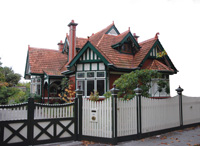
Art Nouveau
1890 to 1914
1890 to 1914
The first truly modern architectural design style, Art Nouveau represents a rejection of the Industrial Revolution's mass production techniques. It departs from earlier architectural practices of refining historical and traditional designs and, instead, looks to nature for inspiration. Its underlying idea is to elevate the decorative arts to the level of the fine arts by applying high standards of craftsmanship in the design of everyday objects. Art Nouveau designers adorned their buildings and interiors with stylised flowers, vines and other motifs taken from nature. The mouldings used typically feature sweeping curves and fluid, natural forms.

Californian Bungalow & Between the Wars
1916 to 1940s
1916 to 1940s
In Australian society, the era of mass communications technology brought with it an expanded interest in the cultures of overseas countries - particularly in things American. The demand for new housing was high after 1918. Functional simplicity was the order of the day. Californian Bungalows, with their asymmetrical facades, were less ornate and less formal than Queen Anne homes. They were the style of choice by the 1920s. The architraves and skirting of the period reflect a desire for functional simplicity. Elaborate ornamentation was being rejected as superfluous and lambstongue shapes were the dominant design.

Modern
1920s to the present
1920s to the present
This period is characterised by a radical simplification of form: rectilinear shaped buildings and light, plain surfaces stripped of ornamentation and decoration. Architects adopted glass, steel and concrete to create designs that are honest, utilitarian, economical and driven by the function of their buildings. Open interior spaces are a common feature of this architectural style. The mouldings of this period typically have minimal ornamentation.
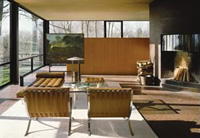
Art Deco
1930s to 1940s
1930s to 1940s
Heavily influenced by the Paris Exhibition of 1925 and the discovery of Tutankhamun's tomb in 1922, this style incorporates the zigzags and geometrical shapes of cubism as well as designs inspired by ancient Egypt. Art Deco homes and public buildings typically feature facades with zigzags and stylised floral, geometric and "sunrise" motifs. Stepped profiles echoing the new machine age as well as geometric decorative elements characterise the mouldings often used in Art Deco interiors.
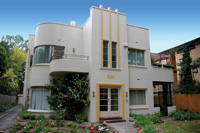
Contemporary
1950s to the present
1950s to the present
Contemporary architecture is designed to reflect a spirit of modernity. It avoids reference to the styles of the past. The typical mouldings of Contemporary architecture have simple angles and are used to highlight sight lines.
